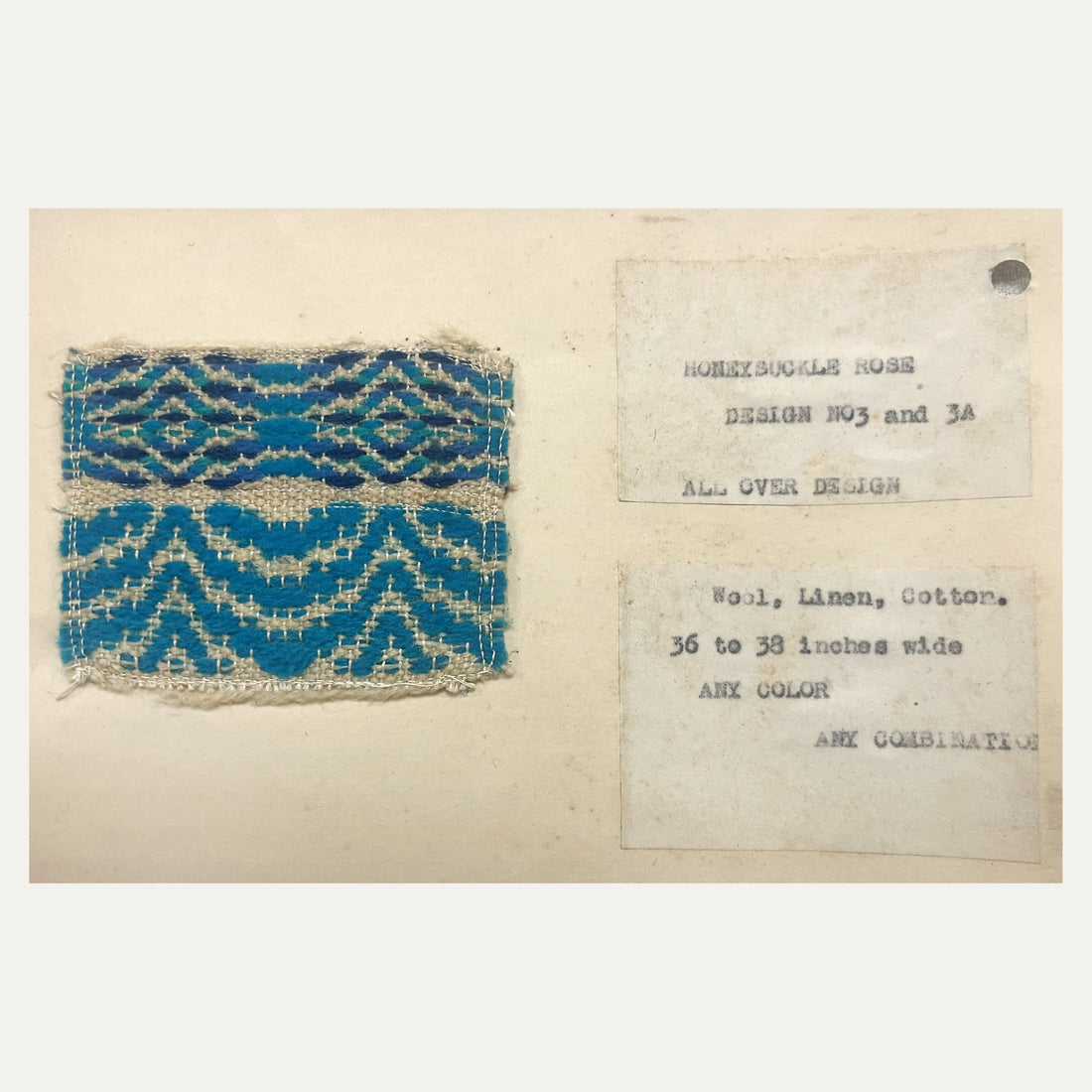
Working at a Joyous Creative Thing: Letty Esherick’s Legacy
The Wharton Esherick Museum in Malvern, Pennsylvania, is turning the spotlight towards a different Esherick in their story this autumn. Working at a Joyous Creative Thing: Weaving, Making, and Material Culture in Letty Esherick’s Legacy brings the long-shadowed figure of Leticia (Letty) Nofer Esherick out from the background of her husband Wharton’s sculptural fame. Known as a dancer, teacher, and determined maker, Letty’s life was stitched through with creative ambition, though her own woven work has rarely been seen until now.
 Leticia (Letty) Nofer Esherick. Undated photograph by Consuelo Kanaga. Wharton Esherick Museum Collection.
Leticia (Letty) Nofer Esherick. Undated photograph by Consuelo Kanaga. Wharton Esherick Museum Collection.
The exhibition borrows its title from a letter Letty wrote to Wharton in 1947: “Just now I want a chance to do what you have been doing all your life, working at a joyous creative thing…” It’s part declaration, part plea, and a moment of candour that reveals the tension between domestic expectation and artistic desire. The textiles on view, unearthed by museum staff in 2022 after decades in storage, tell the rest of the story: woven samples, garments, and experiments that trace a life spent tacitly making, but with persistence.
 Kelly Cobb (right) on a site visit to Family Heirloom Weavers, one of the last surviving US textile mills, in Red Lion, Pennsylvania.
Kelly Cobb (right) on a site visit to Family Heirloom Weavers, one of the last surviving US textile mills, in Red Lion, Pennsylvania.
Curator and artist Kelly Cobb, Associate Professor of Fashion and Apparel Studies at the University of Delaware, has made Letty’s textiles the centre of her 2025 Artist-in-Residence project at WEM. Rather than add another chapter to the Wharton legend, Cobb looks sideways to the woman who threaded creativity through the daily fabric of life. Her research brings together textile analysis, photographs, and fieldwork at the Penland School of Crafts in North Carolina, where Letty studied weaving in the late 1940s. The result is both scholarship and tribute, a study in how overlooked stories can alter the pattern of art history.
 Left: Joy O. Ude (in collaboration with Letty Esherick and Kelly Cobb), Block Printed Ensemble, 2025, hand-printed fabric from hand-carved linoleum block. Right:
Left: Joy O. Ude (in collaboration with Letty Esherick and Kelly Cobb), Block Printed Ensemble, 2025, hand-printed fabric from hand-carved linoleum block. Right:
Letty Esherick, Printed Top and Skirt Set, circa 1940s-1960s, printed fabric.
Cobb’s contemporary collaborators are Nicole Feller-Johnson, Sophia Gupman, Eliza Hardy Jones, Abby Lutz, Dana Meyer, and Joy Ude, who answer Letty’s work with their own through embroidery, sound, garment-making, and installation. Their dialogue across time feels refreshingly free-thinking: more like a jam session in fibre, where Letty’s warp meets a new generation’s weft. Together they explore making as labour, livelihood, and legacy.

Letty Esherick, Halter Top and Pant Set, 1940s – 1960s. Handwoven and embroidered cotton. Wharton Esherick Museum Collection. Image courtesy of Kelly Cobb.
Letty’s weavings show a maker’s pragmatism — careful repairs, improvised materials, an instinct for beauty that begins with what’s at hand. Cobb’s responses follow that rhythm, honouring craft as both method and metaphor for creative endurance, asking us to look again at where modern craft so often begins - not in the studio spotlight, but at the kitchen table, in the quiet rhythm of hands determined to keep making.
Working at a Joyous Creative Thing runs from September 18 to December 28, 2025, marking the midpoint of Cobb’s residency. More research and new works will follow in spring 2026. For details on upcoming talks, workshops, and visiting information, see whartonesherickmuseum.org/programs.
-
Further Information:
Working at a Joyous Creative Thing runs from September 18 to December 28, 2025, marking the midpoint of Cobb’s residency. More research and new works will follow in spring 2026. For details on upcoming talks, workshops, and visiting information, see whartonesherickmuseum.org/programs.
-
Image Credits:
Lead: Letty Esherick, Honeysuckle Rose Pattern Sample, circa 1940s, wool, linen, cotton. Wharton Esherick Museum Collection.
All other images as credited in photo captions.
